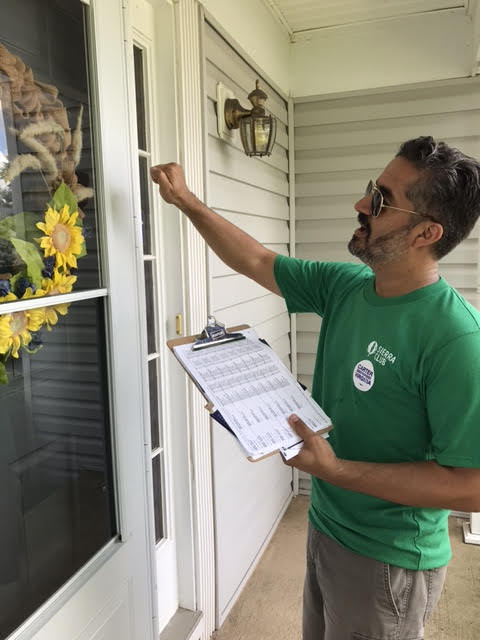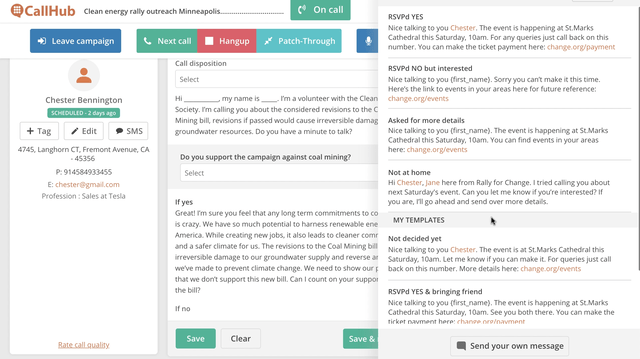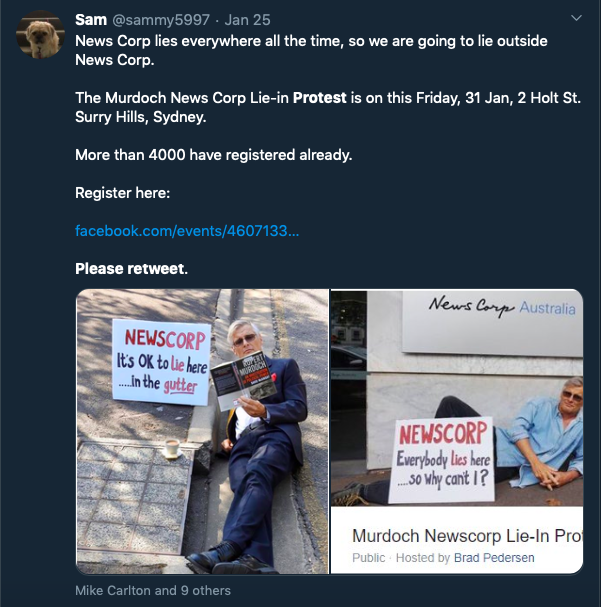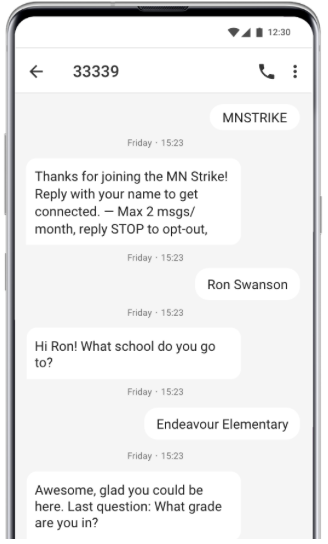You can bring change.
Grassroots organizing enables ordinary people like you and me to unite and influence policies. Experts agree.
The most effective way to bring change is by organizing, especially at the grassroots level.
Dolores Huerta, Veteran Grassroots Organizer, and Co-Founder, United Farm Workers of America
However, like all things that sound too good to be true, organizing doesn’t come easy. Often, grassroots movements in response to issues affecting over 90% of a country (like Occupy Wall Street) fall flat even with massive support.
Why? That is what we’ll explore in this post. But before we get to that, let’s understand what grassroots organizing means.
What is grassroots organizing?
Janis Foster Richardson, author and the executive director of Grassroots Grantmakers, penned down a simple definition of grassroots organizing:
Grassroots organizing involves people being drawn together by something that they have in common, that has both personal and community consequences, and granting themselves the authority to solve the problem they are facing or creating the future they desire.
Janis Foster Richardson
To put it more technically, a grassroots movement mobilizes people affected by an issue as the basis for a political, social, or economic movement. These movements leverage collective action from the people at the ground level to influence decision-makers and drive favorable policy changes.
Just two or three people canvassing and speaking out to gain support from like-minded individuals is what it takes to start a grassroots advocacy campaign.
Grassroots Organizing Example:
ACT UP
The AIDS Coalition to Unleash Power or ACT UP was a grassroots movement formed in the 1980s in response to the AIDS crisis in America. The government ignored the crisis, which led to pharma companies charging exorbitantly high prices for the drugs that most people could not afford.
The movement’s first large-scale action was a march on Wall Street in 1987. This march was followed by a series of small-scale marches and another significant protest in which members took over the FDA building, leaving them unable to operate.
Result
In the year following the FDA takeover, the FDA and the NIH began including AIDS activists in their policy-making decisions.
The FDA also approved an ACT UP plan for revising and improving clinical trials, and a second antiretroviral drug was approved for widespread use.
Does grassroots organizing work?
While there are many examples of grassroots movements bringing about change, there are quite a few campaigns that showcase the opposite.
So the question remains, does grassroots organizing work?
Yes and No.
While grassroots organizing can effectively bring about policy changes, there are a few factors that may lead your efforts into the ground. Here are some of those major factors that you must know about.
Lack of leadership
Grassroots movements often tend to focus a lot on building a base of support. This leads to movements becoming more horizontal rather than having a clear hierarchy.
The lack of leadership in a grassroots movement leads to the following issues:
- The movement lacks a clear direction. While people may be aware of the issue, they may be unaware of the relevant action to be taken to bring tangible change.
- There is a lack of centralized management. No one controlling aspect of the movement would lead to the spread of disinformation, low retention, disunity among supporters, etc.
Grassroots Organizing: Leaderless movements
Occupy Wall Street
Occupy Wall Street (OWS) was a grassroots movement against economic inequality that began in Zuccotti Park, located in New York City’s Wall Street financial district, in September 2011.
The movement’s main issues were income disparity in the US, the influence of corporations in politics, and economic inequality in general. While the movement was able to inspire people to mobilize, without leadership, they failed to:
→ Define clear goals for the movement
→ Create an effective plan of action
→ Structure the organization with a shared purpose (people were unclear about the actual issues affecting them)
Result
By 15th November 2011, Zuccotti Park was cleared, and the protesters were sent home, achieving little. Furthermore, there was no clear plan for the next steps to keep the movement going strong.
How can you avoid it?
The reason why movements end up leaderless is that organizers often get caught up in ground-level tasks like outreach and base building and lose focus and control. To avoid it, you should:
- Delegate operational tasks like base building, canvassing, training, etc. Make sure that you, as the grassroots organizer, don’t lose focus of the set goals.
- Segment your supporters and assign leadership responsibilities to your strongest supporters. Communicate with these leaders to maintain control and stay in the loop of ground-level activities.
Related reading:
→ Practical tactics to fight disinformation
Slacktivism
While social media is a valuable tool for grassroots organizing, it comes with a significant challenge: slacktivism (also known as clicktivism).
Slacktivism is when people support a cause with simple measures (like sharing or liking a post) but are not necessarily engaged enough to take relevant action (like attending a rally or donating).
Social media shares and likes get people an easy dose of a positive feeling without them needing to put in actual effort. This leads to slacktivism, which can lead to serious problems like:
- Smaller base of support. It becomes tough to get people together and mobilize them.
- Difficulty influencing policymakers. With a smaller group, it becomes hard to compel decision-makers and bring about policy changes.
Grassroots Organizing: Slacktivism
Kony 2012:
Kony 2012 was a campaign created by Invisible Children in the form of a 28-minute video about the dangerous situation of children in Africa at the hands of Joseph Kony, the leader of the Lord’s Resistance Army (LRA).
The LRA has abducted a total of nearly 60,000 children, brainwashing the boys to fight for them and turning the girls into sex slaves.
The campaign was used as an experiment to see if an online video could reach a large audience and compel them to take action and influence decision-makers to stop Kony.
Result
While the campaign was a massive success online, with the hashtag #stopkony reaching over 5 million retweets, it failed to mobilize supporters in public places. Joseph Kony was never captured and is still at large.
How can you avoid it?
While slacktivism is seen negatively, remember that people taking even a small action are interested in your cause. Transform them into strong supporters by nurturing them right.
- Start by engaging people to take these small steps. For example, a thank you post for everyone who shared your content (add their names if possible).
- Follow up with posts that have a strong call-to-action that gets you more information on them. For example, after thanking the supporters, share a post that requests your supporters to sign an online petition and get their info at sign-up.
- With their contact information, nurture them with updates and gradually move to more significant asks like sending a text to a friend (about the cause).
Related reading:
→ Most common reasons for slacktivism and how to motivate people to take action offline
Astroturfing
Astroturfing refers to movements that appear to be grassroots organizing but are created by an outside organization. It is often used by corporations to push certain agendas.
The problem with it is that often these agendas don’t have the public’s best interest in mind. Sometimes, it’s quite the opposite.
Here is how Astroturfing can impact your grassroots organizing efforts:
- Successful movements may take away the credibility of grassroots campaigns, making it tougher to organize for other issues.
- Some movements may also lead to multiple long-term repercussions for the people. New issues arising could take away people’s focus from already existing problems that you were trying to resolve.
Grassroots Organizing: Astroturfing
Alliance of Australian Retailers:
In 2010, the Australian Federal Election proposed legislation that would make Australia the first country with “plain cigarette packaging.” The logos, brands, and ads would be replaced by health warnings, pictures, and the brand name in plain, white type on the pack.
In response, the Alliance of Australian Retailers was formed to fight on behalf of small businesses that could be hurt by the law and the accompanying tax hike. The 19,000 members representing corner stores, petrol stations, and newsagents tried to stay the legislation.
Result
These members had millions of dollars in support from big tobacco companies like Philip Morris International, British American Tobacco, and Imperial Tobacco.
When the Big Tobacco companies were revealed as backers of the AAR, retailers quit the campaign, forcing Philip Morris to hire a public relations company to handle the fight.
How can you avoid it?
To avoid Astroturfing from affecting your efforts, you must maintain your credibility and focus on the campaign. Here’s how you can do that:
- Maintain complete transparency. Make sure that each of your volunteers knows exactly what is happening, the complete plan of action, funding sources, etc. Don’t hide anything from them if you want their trust.
- Encourage volunteers to network among themselves. Let them know exactly why the others are supporting you and how the issue affects them. Promote empathy among people in this way so that they know there is no ulterior motive behind it all.
- Provide each volunteer with the campaign plan to ensure they know what to focus on. Celebrate milestones to keep them motivated to achieve more. Remind them of the goal and how it will change their lives subtly and regularly through emails, meetings, social posts, etc.
Keep these factors in mind and make sure to plan for them to affect you when planning to build an advocacy campaign.
Grassroots organizing tactics that work best
Dolores Huerta explains that grassroots organizing fails because organizers don’t engage with prospects one-to-one to educate them about the cause. If people are unaware or confused about the issue, they’ll drop their hands and not vote.
>> Watch the interview here:
That being said, we now know that the two key factors that make grassroots organizing successful are:
- Engagement: Engaging people with a more in-depth conversation at a personal level
- Education: Making people aware of the cause and how it affects them
Let’s look at some grassroots organizing tactics that would allow you to factor in the above elements.
1. Door-to-door canvassing
Door-to-door canvassing involves volunteers knocking on doors and educating people on the issues that your grassroots movement is fighting. The conversation also includes understanding their view of the issue and their concerns and addressing any objections they may have about being a supporter.
Door knocking enables you to engage prospects in a deep, personal conversation and address their objections and concerns on the spot. This is primarily why door knocking is so effective.
Door-to-door canvassing is typically used when:
- Organizers don’t have a lot of supporters coming in on their own, often for issues that people don’t completely understand, for example, an economic crisis.
- When the ask is huge, like making a donation or placing a yard sign. Bigger asks (especially if the individual is not yet invested in the cause) will require more convincing, which is best-done face-to-face.

Pro tips
- Provide intense training: For many of your volunteers, it would be their first time canvassing. Ensure they are well-versed with canvassing etiquettes, the right talking points, and how to handle objections.
- Work in coalitions: You can partner with other organizations with similar causes and combine your efforts and causes. This could help you fill the gaps in your efforts. For example, they could provide you with more volunteers, and you could train them.
2. Phone Banking
Phone banking comprises of volunteers calling prospects and convincing them to support your cause. It is the best door-knocking alternative as it allows you to engage supporters with one-to-one conversations.
The additional benefit is that it eliminates the effort required to walk around neighborhoods, thereby giving you time to make more calls.
Use phone canvassing when:
- You have a large list of prospects to go through in a limited amount of time. The reduced effort allows you to contact 40-50 people in an hour on average. This number can go higher if you choose the right autodialer.
- If the campaign is not specific to a region or doesn’t have enough volunteers to gather support.
With social distancing rules in effect, phone banking is now also a safer option for canvassing.
Pro tips
- Use a comprehensive virtual call center software: You would want one that can manage everything from one interface. For example, CallHub’s text through call center feature allows you to send follow-up texts from the calling dashboard.

Apart from reducing the cost of employing mass texting software, this will also reduce the volunteer’s effort in switching between apps and allow them to focus on calls.
- Make sure to make a small ask: Especially if it is the first contact you’re making. This will help you get your foot in the door and get them more invested in your campaign. It will be easier to nurture and mobilize them from that point onwards.
3. Online organizing
While grassroots organizing online does come with the challenge of slacktivism, you can’t deny the boundless reach it can provide you.
The channels and features available for online organizing allow you to communicate various information in different formats and drive supporters to take action. For example, raising money through donation emails, showcasing impact by posting images or videos on social media, engaging prospects with discussions on online forums, etc.
Online organizing comes in handy when:
- You don’t have the contact information of people to reach out to. Online organizing can help you with list building. For example, an engaging video posted on social media with SMS opt-in details can drive people to subscribe to your SMS list.
- You don’t have enough volunteers. Digital platforms can supplement your volunteer recruitment. This, in turn, can give you people to take up canvassing efforts.
- To retarget people who have been contacted through other channels. It’s a good way to keep the cause and the campaign fresh in their mind.
Pro tips
- Encourage peer-to-peer sharing: People are more likely to respond to an appeal made by a friend than an organization. Therefore, get people to share your content on their profiles to maximize your reach. It’s as simple as adding a line that requests people to share, as in the example below.

- Avoid using too many platforms: While it may seem counterintuitive, the challenge is that creating content for multiple platforms could take up a lot of time. Plus, it may also make it difficult to streamline the process of nurturing new supporters and gradually leading them to big appeals.
The best way is to select a few platforms where you may find the most relevant prospects and focus on them.
4. Texting
Texting is a grassroots organizing tactic used as an add-on to other tactics. Organizers use texting to quickly spread campaign updates or reminders about taking action with a text blast.
It also comes in handy when you want to engage supporters in a quick conversation like responding to an event invite or getting feedback using peer-to-peer texting.
Grassroots organizers use SMS:
- If people are aware of the issue and just need a reminder to take action. The high open rates ensure that the message is delivered and read.
- When you need to send a follow-up after a conversation. For instance, sending a donation link after talking to supporters over the phone.
Pro tips
- Set up autoresponders to collect more information: Text autoresponders can help you build a more exhaustive list by automatically collecting users’ details when they opt in. This data can then be used to segment and nurture them.

- Segment your SMS list based on engagement level: Send targeted messages to people based on how closely involved they are. For example, new supporters may want to know more about the issue and your plan for it. On the other hand, supporters who have been with you for a while would want to know the impact created so far.
While each of the grassroots organizing tactics described above may sound different, the objective is mostly the same. Hence, the best way to maximize impact is to employ a good mix of all the community organizing strategies.
While it’s admirable that you’re taking on an issue, remember that you can only bring actual change if you’re meticulous with your efforts. You will need to plan for complications that can foil your efforts and leverage strategies that can get you the best results. Hopefully, the points above help you with that.
Featured image source: Australian National Library


